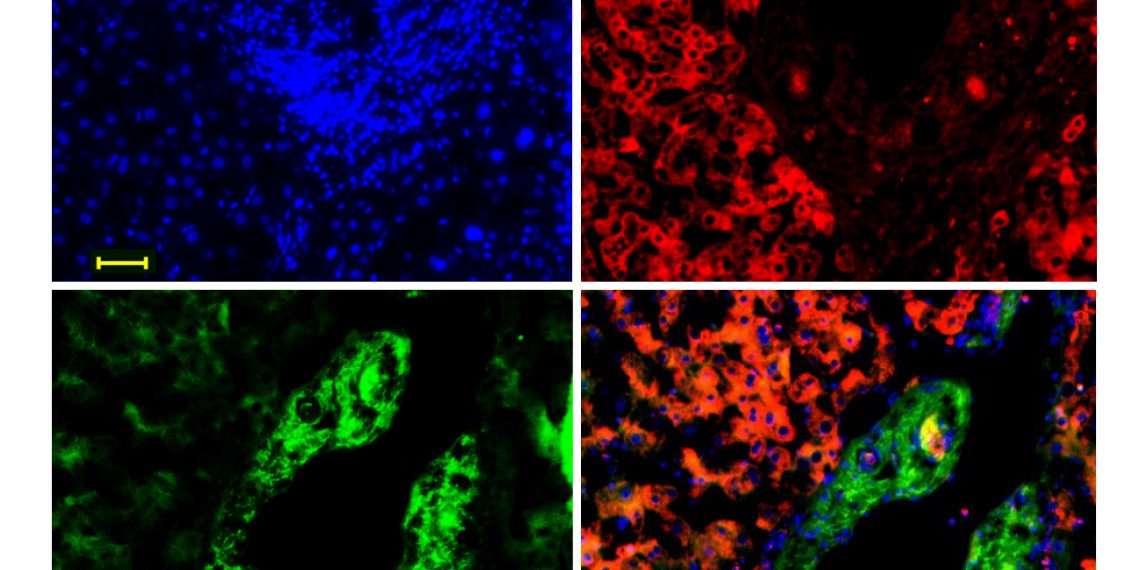Signal transduction is a highly complex matter in cells. TGF‑ß regulates many cell functions during human and animal development, but also in the adult organism. How this works in detail is only incompletely known. What is clear is that activated TGF‑ß initially binds to receptors located on the cell surface. The TGF‑ß receptors in turn activate a protein called SMAD3 in the cell. This protein then binds with SMAD4 and migrates together with it into the cell nucleus. There, the SMAD proteins influence the extent to which genes are switched on and translated into proteins and other gene products.
Researchers at Goethe University Frankfurt, Heidelberg University, the German Cancer Research Center and Heidelberg and Jena University Hospitals have now discovered how the Von Hippel tumor suppressor (pVHL) intervenes in this signaling pathway. Tumor suppressors are proteins whose defect or deficiency in a multicellular organism is associated with a high risk of cells degenerating into tumor cells. The scientists report in the “Journal of Cell Biology” the first evidence that pVHL degrades the SMAD3 protein. This occurs even before SMAD3 and SMAD4 combine. pVHL thus inhibits the signaling chain that originates from activated TGF‑ß. “We were able to provide this evidence both in cultures of human cells and in fruit flies of the genus Drosophila,” says last author Dr. Xinlai Cheng. “This suggests that pVHL took on the regulatory function we have now uncovered very early in evolution.”
Xinlai Cheng has been head of a junior research group at the Buchmann Institute for Molecular Life Sciences at Goethe University since 2019. He had started the research at the Institute of Pharmacy and Molecular Biotechnology at Heidelberg University. His mentor Prof. Stefan Wölfl explained an important finding resulting from the connection found between pVHL and the TGF‑ß signaling pathway:
“pVHL is known to be involved in how cells sense oxygen, as it were, and respond to its differential availability. Thus, the supply of oxygen to cells also influences TGF‑ß signaling.”
- Prof. Stefan Wölfl
The researchers’ discovery offers new opportunities for the development of anti-cancer drugs. “If, for example, you could use a drug to specifically regulate pVHL activity, you would also use it to influence the TGF‑ß signaling pathway, which in turn plays a major role in the formation of tumors and metastases in particular,” says Xinlai Cheng. Tumor cells can adapt well to their environment in the organism and to different oxygen availability. They are helped in this by the fact that they are very flexible in their cellular activity. This activity is regulated, among other things, by the TGF‑ß signaling pathway.

















